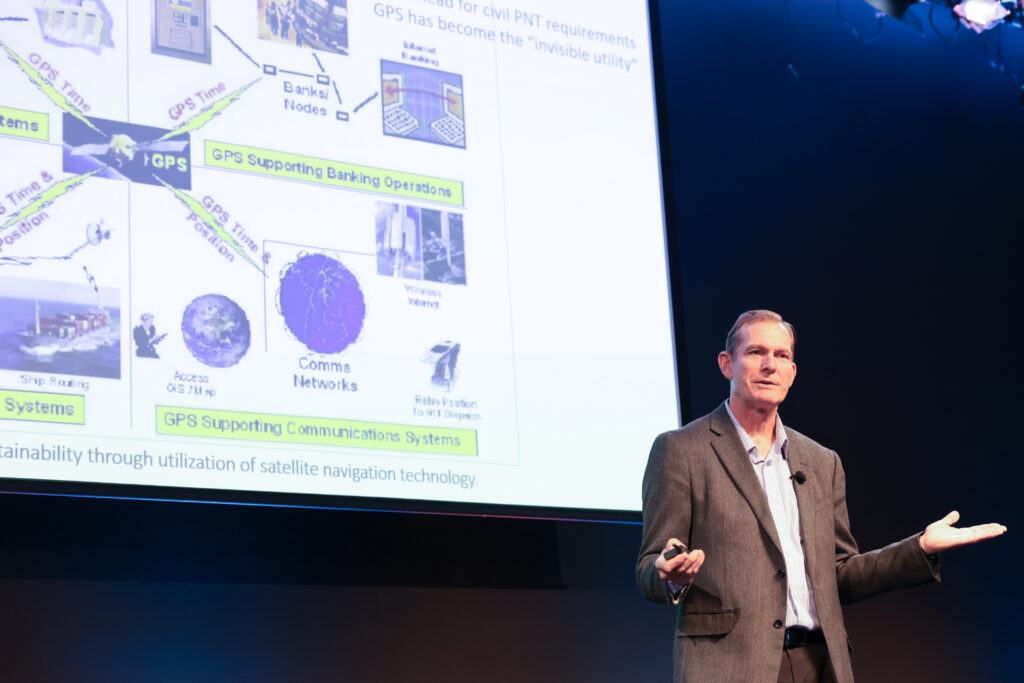By Chris Forrester

Dr Bryan Benedict, Snr Director of Innovation & Satellite Programs, SES, delivered a superb presentation that was completely focussed on PNT (Position, Navigation and Timing), and asked what role there could be from commercial interests in ‘new’ PNT applications.
He listed the six established PNT systems (GPS, Russia’s Glonass, China’s BeiDou, Europe’s Galileo, Japan’s QZSS and India’s IRNSS) and showcased how dependent the world was now on GPS-type systems. “Our kids have no idea how to use a map such is their dependence on GPS. But there’s more with the US and Europe’s improved GPS and now with super accuracy.”
But there were challenges with hostile Jamming and Spoofing/Cyber interference. “There is very heavy jamming taking place today especially over the Ukraine. There’s also the risk from satellite collisions and the resulting debris field which can affect PNT systems.”
Dr Benedict explained that the end of one GPS system was not necessarily the end of the world, but timing was everything. “The world’s governments, especially the US, are looking for multiple solutions and are actively working with industry to say ‘help us’ with alternate strategies. But this also presents difficulties insofar as development work and investment is concerned. What will be the demand? Will people pay for access to your solution? What will it cost, and will there be a ROI? We are totally dependent on GPS both for the military and commercial. As far as a ‘new’ alternate was concerned, the fact is that the US government is likely to be your only customer, because everyone else can get the service for free.”
